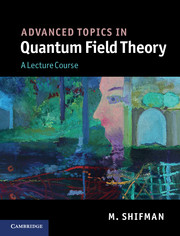Summary
Announcing the beginning of a Big Journey. — Outlining the roadmap.
Quantum field theory remains the basis for the understanding and description of the fundamental phenomena in solid state physics and phase transitions, in high-energy physics, in astroparticle physics, and in nuclear physics multi-body problems. It is taught in every university at the beginning of graduate studies. In American universities quantum field theory is usually offered in three sequential courses, over three or four semesters. Somewhat symbolically, these courses could be called Field Theory I, Field Theory II, and Field Theory III although the particular names may (and do) vary from university to university, and even in a given university, as time goes on.
Field Theory I treats relativistic quantum mechanics, spinors, and the Dirac equation and introduces the Hamiltonian formulation of quantum field theory and the canonical quantization procedure. Then basic field theories (scalar, Yukawa, QED, and Yang–Mills theories) are discussed and perturbation theory is worked out at the tree level. Field Theory I usually ends with a brief survey of the basic QED processes. Frequently used textbooks covering the above topics are F. Schwabl, Advanced Quantum Mechanics (Springer, 1997) and F. Mandl and G. Shaw, Quantum Field Theory, Second Edition (JohnWiley and Sons, 2005).
Field Theory II begins with the path integral formulation of quantum field theory. Perturbation theory is generalized beyond tree level to include radiative corrections (loops).
- Type
- Chapter
- Information
- Advanced Topics in Quantum Field TheoryA Lecture Course, pp. xi - xiiiPublisher: Cambridge University PressPrint publication year: 2012

